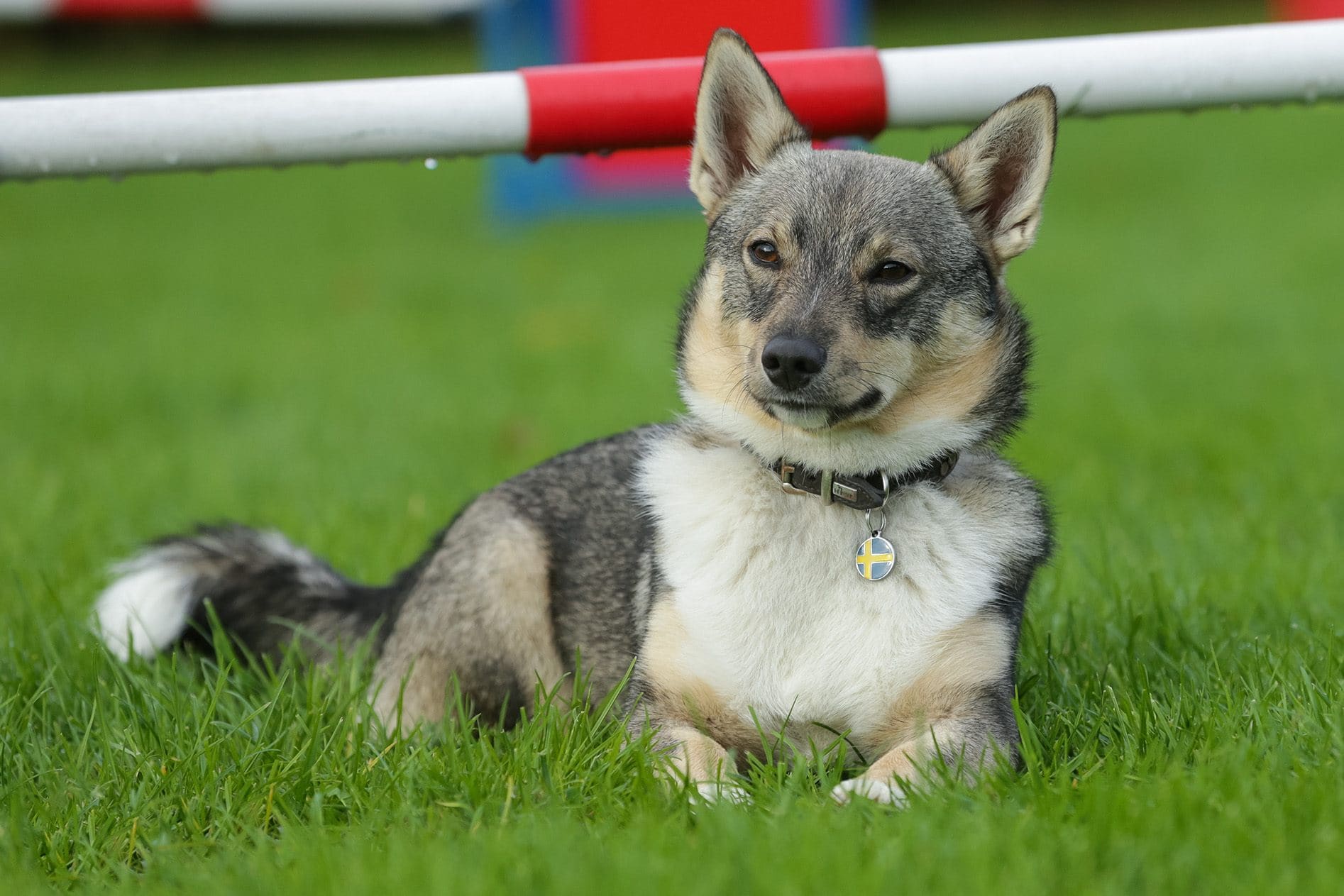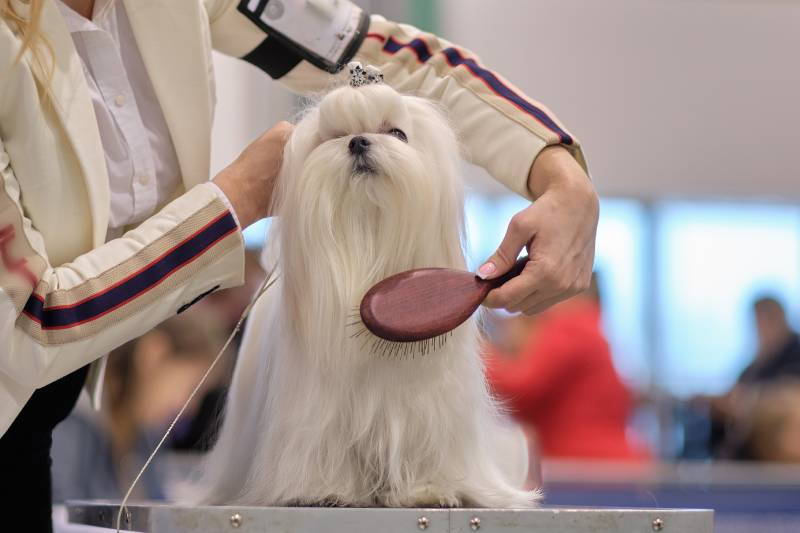How Long Do Swedish Vallhunds Live? Vet Reviewed Lifespan, Data & Care
By Kit Copson
Updated on

Click to Skip Ahead
Also known as the “Wolf Corgi” (despite not being a Corgi at all), the Swedish Vallhund is a spitz breed that has survived since Viking times. It should come as no surprise, therefore, that these hardy little dogs also have a pretty long expected lifespan—just one of their numerous strengths.
Swedish Vallhund live around 12–15 years. In this post, explore in detail the average Swedish Vallhund lifespan and discuss the various factors that contribute to keeping a Swedish Vallhund healthy, happy, and living life to the fullest.
What’s the Average Lifespan of a Swedish Vallhund?
According to the American Kennel Club, the life expectancy of a Swedish Vallhund is 12–15 years. A recent study conducted by the Royal Veterinary College at the University of London revealed that dogs in the Kennel Club’s pastoral group, like the Swedish Vallhund, have an average life expectancy of 11.2 years1.
The dog with the longest life expectancy was revealed to be the Jack Russell Terrier, with an average lifespan of 12.7 years. Sadly, it was found that dogs that live the shortest tend to be flat-faced breeds like Pugs, French Bulldogs, and English Bulldogs.

Why Do Some Swedish Vallhunds Live Longer Than Others?
A well-cared-for Swedish Vallhund living in a safe environment has a better chance of living for longer and having a good quality of life. Let’s explore major contributing factors in more depth.
1. Nutrition
Your Swedish Vallhund’s diet contributes massively to the state of their overall health. They need a complete, balanced formula that fits their age range (puppy, adult) and any specific dietary requirements the individual dog has (weight control, sensitive stomach, joint health, etc.).
The food should also be portioned out by weight as per the guidelines on the packet or as your vet has advised. This helps to prevent your dog from becoming underweight or overweight. Avoid feeding your Swedish Vallhund too many treats or sugary, salty, or toxic human foods like chocolate. Many human foods are unsafe for dogs, so be careful.
2. Environment & Conditions
Your Swedish Vallhund should live indoors with you in a clean, warm, and safe environment for optimum health. Check your home for unsafe spots, like balconies or windows your dog may be able to fall from, dangerous objects, and toxic plants.
3. Mental Health
Dogs quickly become bored, lonely, and stressed out if they’re understimulated. Be sure to give your Swedish Vallhund lots of love, attention, and snuggles (if that’s their thing) to keep stress and loneliness at bay. You’ll also need to play with them daily and provide fun toys (like obstacle feeders or puzzle games) to keep them mentally stimulated.
4. Exercise
Just like humans, dogs need exercise to keep their mental and physical health in check and reduce the risk of health conditions like obesity and diabetes.
Every dog’s exercise needs are different depending on their age, health, and personality, but adult Swedish Vallhunds typically need around an hour of physical exercise per day. It may surprise some just how energetic these dogs can be, but this stems from their working history as herding dogs.
5. Inherited Conditions
Irresponsible breeding greatly increases the number of dogs out there with inherited health conditions. If you go to a breeder, make sure it’s a breeder with high welfare standards and that provides health checks. If you adopt your Swedish Vallhund, the rescue organization will provide you with as much information as possible about the dog’s health history.
Genetic conditions linked to Swedish Vallhunds include hip dysplasia, which is a condition that affects the hip joint, and Swedish Vallhund retinopathy, an eye condition.

6. Healthcare
There is always the chance that your Swedish Vallhund will need medical attention at some point. Taking your dog for regular veterinary checkups (at least once per year) is very important, as it can identify any developing health conditions and ensure the dog gets treatment as soon as possible.
All dog owners should be signed up with a veterinary clinic, as failure to seek medical attention or ignoring signs of health conditions can be fatal for the dog. If you notice any changes in your Swedish Vallhund (for example, lethargy, inappetence, vomiting, diarrhea, changes in eating habits, changes in behavior, etc.), please contact a vet straight away.
The 4 Life Stages of a Swedish Vallhund
Puppy
Your Swedish Vallhund is in the puppy phase until they’re 6 to 9 months old. As puppies, dogs are typically very curious and excited about everything. It’s also the best time to start training and socializing them.
Young Adult
Dogs are young adults from 6 to 9 months old up until they’re around 3 or 4 years old. The end of this stage marks the dog’s full maturation.
Mature Adult
Dogs are mature adults from when they’re 3 or 4 years old up to the start of the final 25% of their expected lifespan.
Senior
As seniors, dogs enter the final 25% of their expected/estimated lifespan. Therefore, if, for example, a Swedish Vallhund lives to the age of 12, they’ll enter their senior years at around the age of 9.
How to Tell Your Swedish Vallhund’s Age
If you don’t know your Swedish Vallhund’s age, you can ask your vet for an estimation. To estimate a dog’s age, vets typically look at the condition of the teeth. The teeth are whiter when the dog is young, and they sometimes get yellower and more worn down with age.
However, this isn’t always an accurate determiner, since young dogs with poorly-cared-for teeth can display yellowing, perhaps even more than an older dog with well-cared-for teeth. Other things vets will look for include signs of graying and cloudiness in the eyes, which can indicate that a dog is older.
Behavior can also help you tell a dog’s age—healthy young dogs are typically quite energetic and curious, whereas older dogs often start to slow down somewhat.
Conclusion
To recap, Swedish Vallhunds have an estimated lifespan of 12–15 years, which is not bad at all. However, this is not a given—proper care, nutrition, and living conditions can make all the difference when it comes to a dog’s lifespan and overall quality of life. If you’re concerned about your Swedish Vallhund’s health in any way, please reach out to your vet.
See Also:
- World’s Rarest Dog Breeds(With Pictures)
- Fascinating Swedish Vallhund Facts (Vet-Reviewed)
- What Is a Wolf Corgi?
Featured Image Credit: Olga Aniven, Shutterstock















